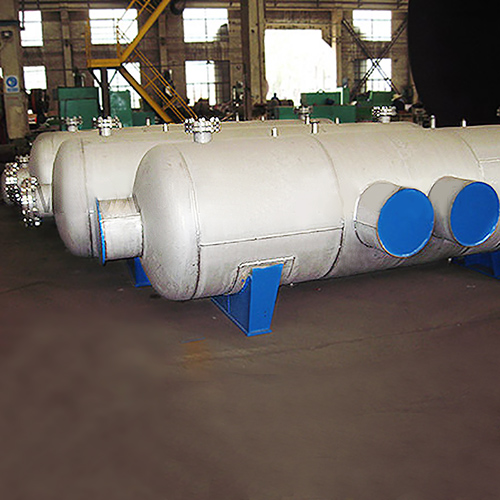The selection principle of austenitic stainless steel welding material is to ensure that the corrosion resistance and mechanical properties of the weld metal are basically equal to or higher than that of the base metal under the condition of no cracking, and the alloy composition is generally required to be substantially the same as the base material. For corrosion-resistant austenitic stainless steels, it is generally desirable to contain a certain amount of ferrite, which not only ensures good crack resistance, but also has good corrosion resistance. However, in some special media, like the weld metal of urea equipment, it is not allowed to have ferrite, otherwise, it will reduce its corrosion resistance. For austenitic steels for heat resistance, the control of the ferrite content in the weld metal should be considered. For austenitic steel weldments operating at high temperatures for extended periods of time, the ferrite content in the weld metal should not exceed 5%. One can estimate the corresponding ferrite content according to the Schaeffler diagram, based on the chromium equivalent and nickel equivalent in the weld metal.
Selection principle of ferritic stainless steel welding materials
There are basically three types of ferritic stainless steel welding materials: those whose composition is basically matched with the base metal; austenitic welding materials; nickel-based alloy materials, which are rarely used because of their high price.
The ferritic stainless steel welding material can be made of a material equivalent to the base material, but when the degree of restraint is large, cracks are easily generated, and heat treatment can be used after welding to restore corrosion resistance and improve joint plasticity. The use of austenitic welding materials can skip the processes of preheating and post-weld heat treatment, but for various steels without stable elements, the sensitization of the heat-affected zone still exists, and the 309 and 310 chromium-nickel austenitic welding materials are commonly used. For Cr17 steel, 308 type welding materials can also be used. Welding materials with high alloy content are beneficial to improve the plasticity of welded joints. The austenitic or austenitic-ferritic weld metal is basically stronger than the ferritic base metal, but in some corrosive media, the corrosion resistance of the weld may be very different from that of the base metal. So be careful when choosing a welding material.
Selection principle of martensitic stainless steel welding materials
In stainless steel, martensitic stainless steel can be adjusted by heat treatment. Because of that, in order to ensure the performance requirements, especially for heat-resistant martensitic stainless steel, the weld composition should be as close as possible to the composition of the base metal. In order to prevent cold cracking, austenitic welding materials can also be used, and the weld strength at this time is inevitably lower than that of the base metal.
When the weld composition is close to the base metal composition, the weld and heat affected zone will harden and become brittle at the same time, and the temper softening zone appears in the heat affected zone. To prevent cold cracking, components with a thickness of 3 mm or more are often preheated, and heat treatment is often required after welding to improve the joint performance. Since the thermal expansion coefficient of the weld metal and that of the base metal are basically the same, the welding stress may be completely eliminated after heat treatment.
When the workpiece is not allowed to be preheated or heat treated, the austenitic microstructure weld can be selected. Because the weld has high plasticity and toughness, the weld stress can be relaxed, and more hydrogen can be dissolved, thereby reducing the cold cracking tendency of the joint, but this kind of joint with uneven material has different thermal expansion coefficient. Under the working environment of circulating temperature, shear stress may occur in the fusion zone, which may cause joint damage.
For Cr13 martensitic steel, when the weld of the austenitic structure is not used, there is little room for adjustment of the weld composition, which is generally the same as that of the base material, but it is necessary to limit harmful impurities such as S, P, and Si. Si promotes the formation of coarse martensite in the Cr13 martensitic steel weld. Reducing the amount of C is beneficial to reduce the hardenability. A small amount of elements such as Ti, N or Al are present in the weld, and the grains can be refined and the hardenability can be reduced.
For multi-component alloyed Cr12-based martensitic heat-strength steel, the main use is heat resistance, usually with no austenitic welding materials. And the weld composition is close to the base metal. When adjusting the composition, it must be ensured that the weld does not appear once in the ferrite phase, because it is very harmful to the performance -- the main components of Cr13-based martensitic heat-strength steel are mostly ferrite elements (such as Mo, Nb, W, V, etc. In order to ensure that all the organization is uniform martensite, it must be balanced with austenite elements, that is, have appropriate C, Ni, Mn, N, and other elements. Martensitic stainless steels have a relatively high tendency to cold cracking, so low hydrogen and ultra-low hydrogen must be strictly maintained, and this must be taken into account when selecting welding materials.


 English
English Español
Español русский
русский